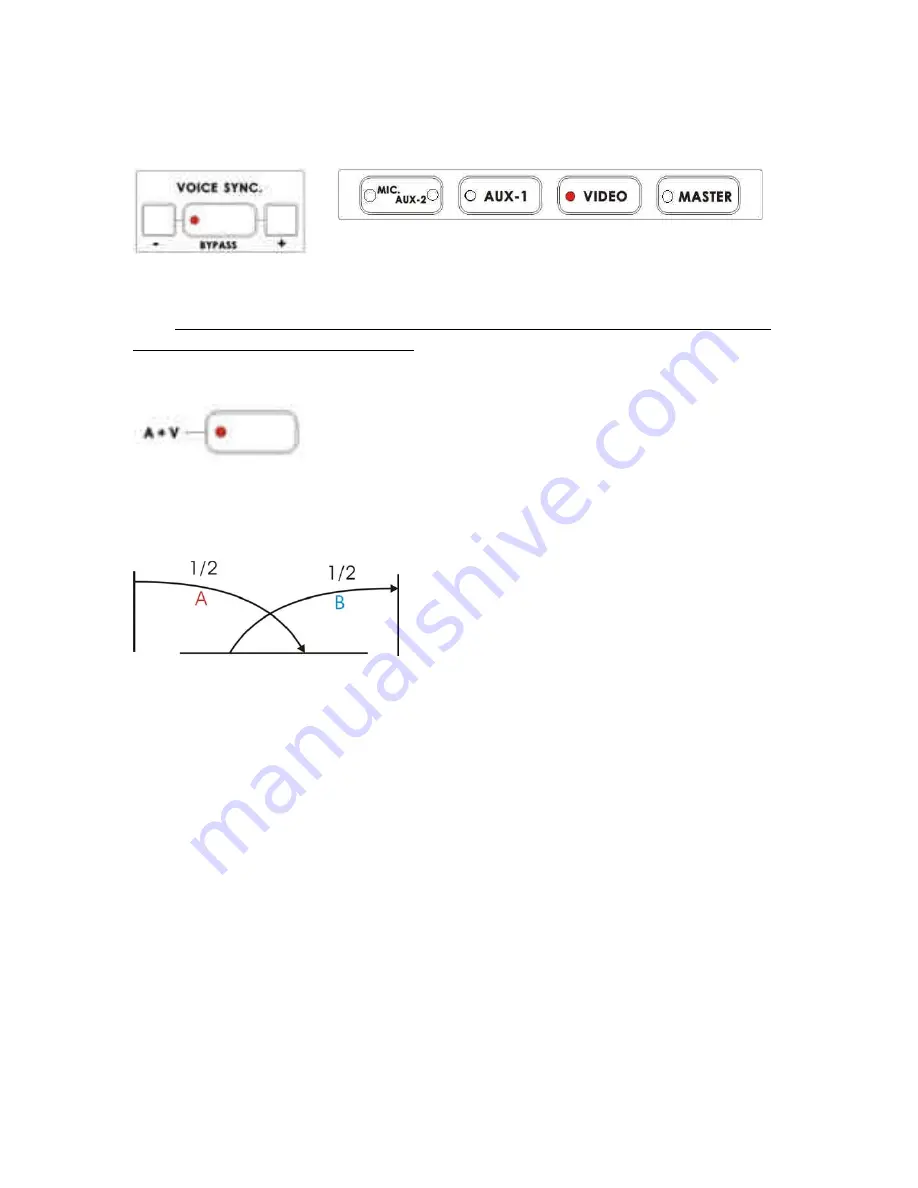
34
Voice sync
When engaged, this control allows you to compensate for delays in the video as it travels through the
various components, processors, and converters of the Switcher, so that the video maintains sync with the
audio.
This control is adjustable from +3 frames (audio advanced) to –19 frames (audio delayed) to
the main Audio bus at the “Video” channel
and affect the video/audio sync at the Master Output. Adjust
this control while watching the Master Video Output on a monitor and listening to the Main Audio Out.
A+V
When this button is active, the audio follows the video through a transition. This means that when this LED is
lit, only one channel of the Audio input section (A, B, C, D) can be activated at a time. When the transition is
a cut, the audio will switch abruptly at the same time the video does. When any other transition is selected,
the audio will do a cross-fade, with the Main Source audio fading out as the Sub Source audio fades in.
This is a representation of the audio fade between source A and source B. As you can see, an equal power
crosses fade from source A to source B.
Try this: With A+V engaged, select channel B on the Main Source bus (of course, you must have a valid
video and audio source at this input!). Notice that channel B is lit in the Audio Input section. Now, select
channel A on the Sub Source bus. Work the T-Bar to manually perform a transition (if no specific transition is
selected, the sources will dissolve) and watch Audio Input Source channel change from B to A, following the
video.
When this feature is not engaged, you can select which of the 4 Audio input channels will be applied to the
Video (VCR) bus at the Fader. In fact, you have to select one or more of the channels, or there will be no
audio present at the Video (VCR) bus.
This button should be inactive while doing beginning-of-session level setting so that you can select an input
and adjust the level.
For more information, see
Audio Inputs, Levels, and Meters
, page
32
.
*. VOICE SYNC” function is only available to correct the Audio input
from the selected “Video” (A, B, C or D) channel.






























